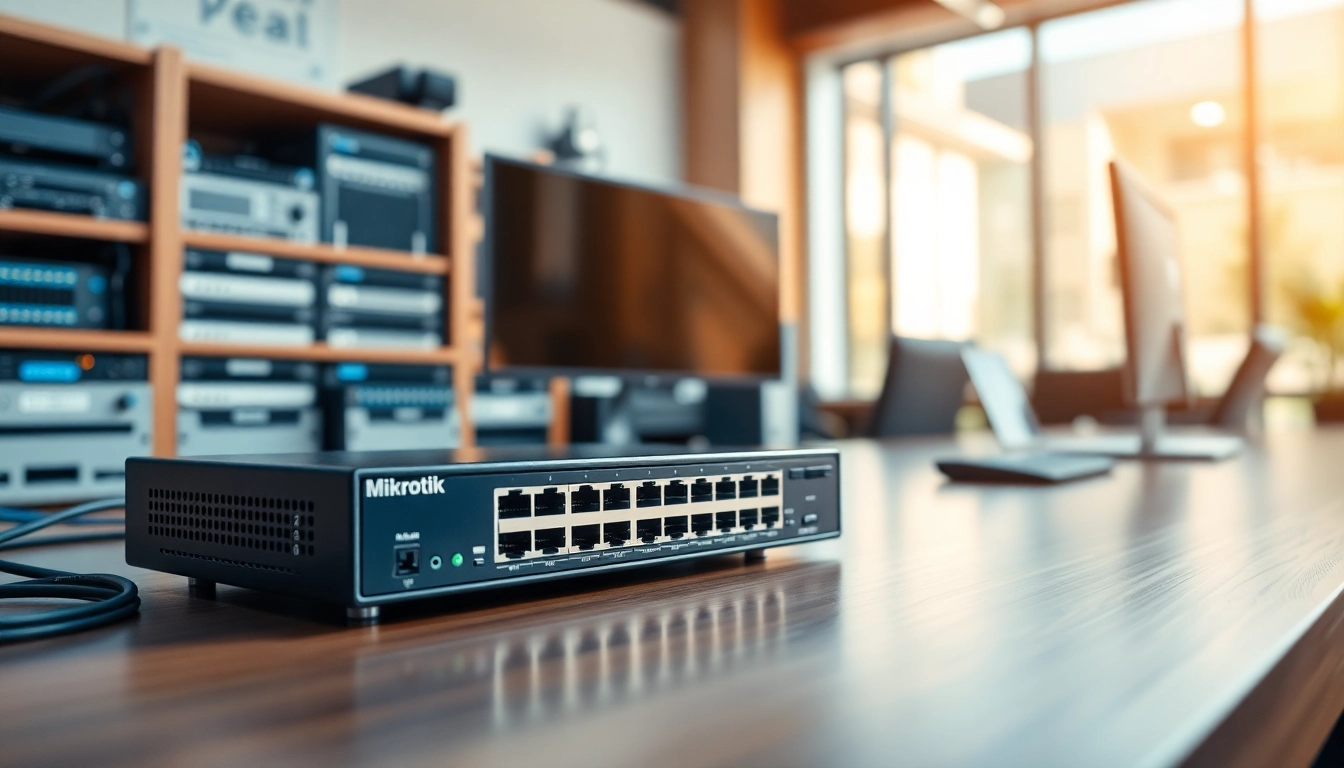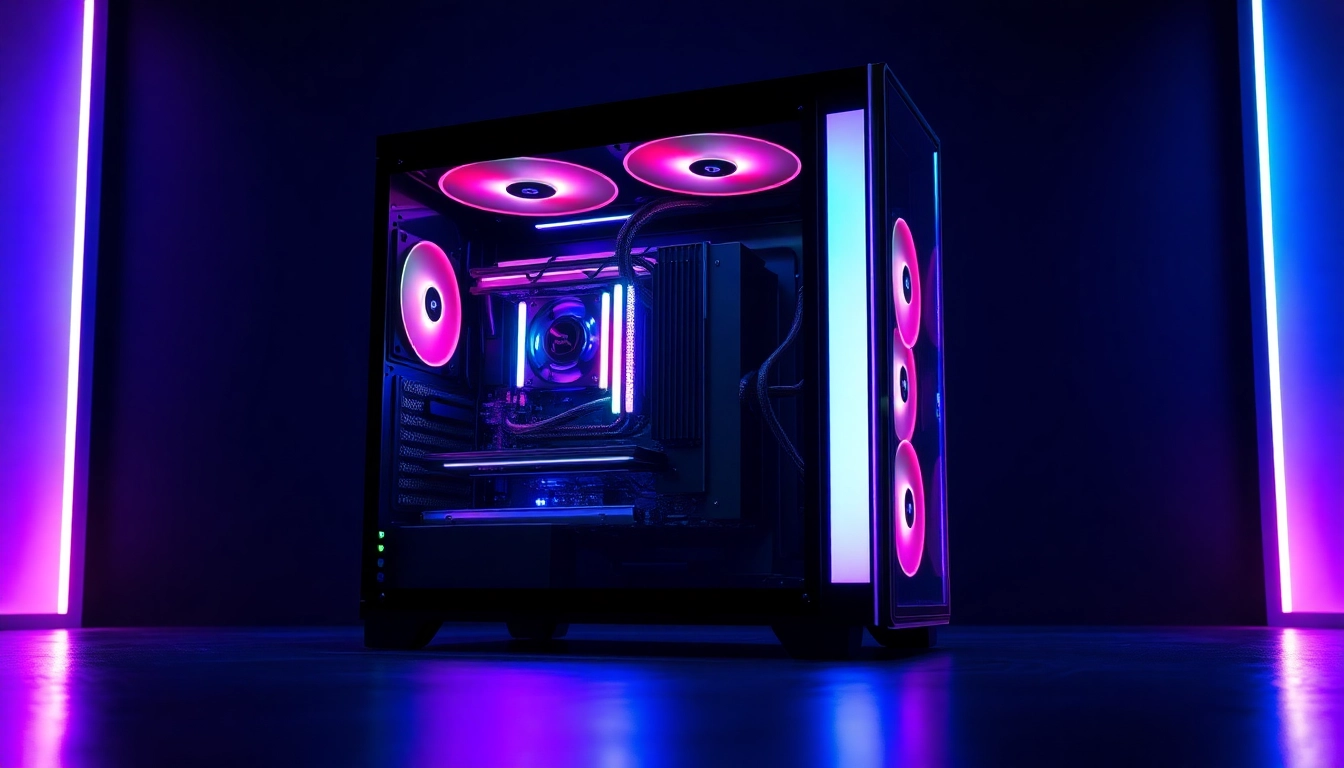Understanding Mikrotik Switch Basics
What is a Mikrotik Switch?
The Mikrotik Switch is a versatile networking device designed to facilitate communication between various connected devices within a local area network (LAN). It operates at the data link layer (Layer 2) of the OSI model, forwarding data frames based on MAC addresses. Unlike a hub, which broadcasts data to all ports, a switch intelligently directs data only to the intended recipient, significantly enhancing the efficiency of network operations. Mikrotik switches are particularly known for their robust performance, feature-rich interfaces, and compatibility with various network configurations.
Key Features of Mikrotik Switch
Mikrotik switches come equipped with several notable features that cater to both average users and network professionals. Some key features include:
- VLAN Support: Virtual Local Area Networks allow for network segmentation, improving security and performance.
- Management Interfaces: Mikrotik switches offer various management interfaces, including a graphical user interface (GUI) and command-line interface (CLI) for versatile management options.
- Power over Ethernet (PoE): This feature enables the switch to deliver power to connected devices, reducing the need for separate power supplies.
- Gigabit Ports: Ensuring high-speed data transmission, many Mikrotik switches come with multiple Gigabit Ethernet ports.
- Stacking Capabilities: Certain models allow multiple switches to be controlled as a single unit, simplifying management.
Benefits of Using Mikrotik Switch
The benefits of deploying a Mikrotik Switch are extensive, particularly for businesses and organizations aiming to optimize their network performance. Key advantages include:
- Scalability: Mikrotik switches can easily adapt to growing networks, allowing for the addition of new devices without compromising performance.
- Enhanced Security: With built-in firewall capabilities and Advanced Security features, Mikrotik switches protect sensitive data from unauthorized access.
- Cost-Effectiveness: Offering high-quality features at competitive prices, Mikrotik switches provide excellent value for budget-conscious consumers.
- User-Friendly Management: The powerful yet accessible management tools make it easy to configure and monitor the network effectively.
Setting Up Your Mikrotik Switch
Initial Configuration Steps
Configuring a Mikrotik Switch for the first time involves several essential steps to ensure optimal performance. Here’s a breakdown of the initial setup process:
- Connect the Switch: Begin by connecting the switch to your power source and linking it to your primary internet router or modem.
- Access the Management Interface: Utilize either the Winbox application or a web browser to access the switch’s management interface. Enter the default IP address, usually found in the switch’s documentation.
- Log In: The default username and password are typically “admin” with no password. Ensure to change these credentials during initial setup for security.
- Set Basic Parameters: Configure the switch’s IP address, subnet mask, and gateway to match your network’s architecture.
- Firmware Update: Always check for firmware updates and apply them to benefit from the latest features and security improvements.
Connecting Devices to Mikrotik Switch
Once the initial setup is complete, you can connect devices to the Mikrotik Switch. Follow these guidelines:
- Cabling: Connect your devices (computers, printers, access points) using Ethernet cables to the available ports on the switch.
- Port Configuration: Depending on your requirements, configure each port for specific needs, such as enabling PoE for devices that require power.
- VLAN Setup: If you’re using VLANs, assign the respective VLANs to each port to ensure that devices are appropriately segmented.
- Testing Connections: Verify connectivity by pinging devices connected to the switch to confirm successful communication.
Common Setup Issues and Solutions
During the setup of a Mikrotik Switch, you may encounter several common issues. Here are solutions to potential problems:
- No Connectivity: Ensure cables are correctly connected and check for link lights on the switch. If there’s no link light, try different cables or ports.
- Incorrect IP Configuration: Verify the IP address settings on both the switch and your devices to ensure they are in the same subnet.
- Unresponsive Management Interface: Check your network settings and ensure that your device is set to the correct IP address range to access the switch’s management interface.
Advanced Features of Mikrotik Switch
VLAN Configuration on Mikrotik Switch
VLAN (Virtual Local Area Network) support is one of the standout features of Mikrotik Switches. Configuring VLANs is essential for optimizing network traffic and enhancing security:
- Access the VLAN Menu: In the management interface, navigate to the VLAN settings section.
- Create VLANs: Define new VLANs by assigning a VLAN ID and naming the VLAN appropriately.
- Assign Ports: Determine which switch ports will carry specific VLAN traffic by assigning them to the corresponding VLAN.
- Test Connectivity: After configuration, test inter-VLAN communication and ensure that devices can communicate as required.
Managing Network Traffic with Mikrotik Switch
Managing network traffic effectively is vital for maintaining optimal performance. Mikrotik Switches offer various tools and techniques for traffic management:
- Prioritization: Use Quality of Service (QoS) settings to prioritize certain types of traffic, such as VoIP or streaming services, ensuring they receive the necessary bandwidth.
- Traffic Monitoring: Regularly monitor traffic patterns and utilization with built-in tools that provide insights into bandwidth usage and potential bottlenecks.
- Port Mirroring: Utilize port mirroring to analyze traffic for specific ports, aiding in troubleshooting and performance tuning.
Security Features of Mikrotik Switch
Security is crucial in network management. Mikrotik Switches provide several features to enhance the security of your network:
- Access Control Lists (ACL): Implement ACLs to restrict access to certain ports or services based on set criteria.
- Storm Control: Activate storm control to prevent broadcast storms that can disrupt network performance.
- Port Security: Configure port security settings to limit the number of MAC addresses allowed on each port, reducing the risk of unauthorized access.
Troubleshooting Mikrotik Switch Problems
Identifying Common Issues
Even with the robust features of a Mikrotik Switch, issues may arise. Identifying these problems quickly is essential for maintaining network stability. Common issues include:
- Intermittent Connectivity: This can be caused by faulty cables or port issues. Inspect cabling and test with different ports.
- Slow Network Performance: High traffic might lead to congestion. Analyze traffic patterns to identify heavy users and consider implementing QoS.
- Configuration Errors: Incorrect settings can lead to various operational issues. Review the configuration for VLANs, IP addresses, and security settings.
Debugging and Repairing Mikrotik Switch
Once potential issues are identified, utilize systematic debugging techniques:
- Consult Logs: Access system logs via the management interface to spot error messages or warnings that can guide troubleshooting efforts.
- Factory Reset: As a last resort, if issues persist and you cannot identify the problem, consider performing a factory reset of the switch. Make sure to back up your configuration first.
- Utilize Command-Line Tools: For advanced users, the CLI provides powerful tools to diagnose and resolve issues, including ping and traceroute commands.
When to Seek Professional Help
There are times when the expertise of a networking professional is warranted. Scenarios to consider include:
- Complex Configurations: If you’re configuring advanced features like multiple VLANs or extensive QoS settings, professional assistance can ensure optimal setup.
- Persistent Issues: If you encounter repeated issues despite troubleshooting efforts, contacting a professional can save time and frustration.
- Scalability Planning: To future-proof your network, consulting with experts can provide insights into best practices tailored to your specific needs.
Best Practices for Maximizing Mikrotik Switch Performance
Regular Maintenance Tips for Mikrotik Switch
Maintaining your Mikrotik Switch is essential for ensuring longevity and performance. Regular maintenance practices include:
- Routine Software Updates: Keep the firmware updated with the latest versions to benefit from security patches and new features.
- Periodic Backups: Create backups of your switch configuration regularly, especially before making significant changes.
- Physical Inspection: Regularly check the physical condition of the switch, looking for any signs of wear or overheating.
Monitoring and Performance Tuning
Performance tuning is fundamental in maintaining an efficient network. Focus on these aspects:
- Utilize SNMP: Simple Network Management Protocol (SNMP) can provide insights into switch performance, traffic loads, and overall network health.
- Analyze Traffic Reports: Regularly review traffic reports to identify patterns and adjust settings based on actual performance and usage demands.
- Optimize VLAN Configurations: Reassess VLAN configurations regularly to ensure they align with current network needs and traffic flows.
Future-proofing Your Mikrotik Switch Setup
To ensure that your Mikrotik Switch installation remains effective as network demands evolve, consider the following strategies:
- Plan for Scalability: Choose a model that can grow with your network requirements and has stacking capabilities for easy expansion.
- Invest in Redundancy: Implementing redundancy through multiple switches ensures that network performance remains high, even in the event of device failure.
- Stay Informed: Keep abreast of technological advancements in networking and connectivity to ensure your hardware and configurations remain current.



